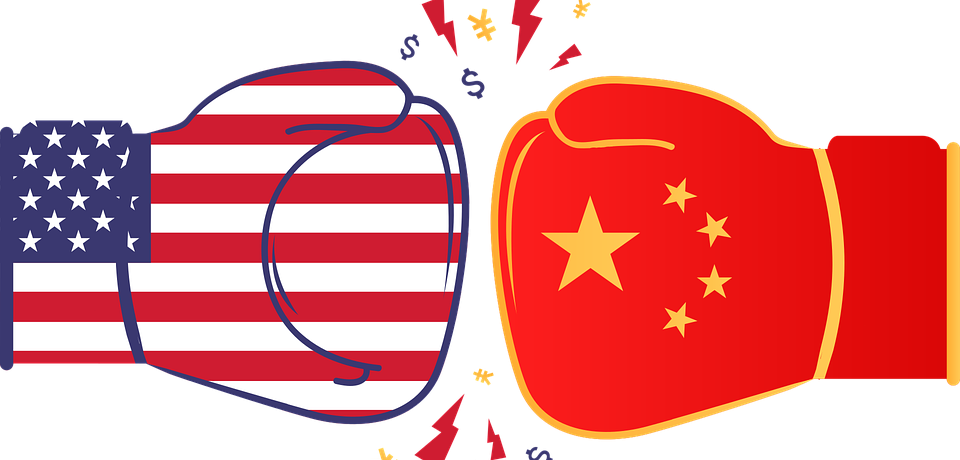
Official acknowledgment by Taiwan that there are US troops on its territory has raised tensions with China. New movements inside the superpowers explain dangerous international moves that once again shake up the world chessboard.
The confirmation by the President of Taiwan, Tsai Ing-wen, in an interview with CNN, of the US military presence on the islands territory, “…to expand defense capacity and train Taiwanese troops” was seen as a provocation by China which called on the US not to intervene in Taiwan. “Those who forget their heritage, betray their homeland and divide the country will never achieve a good result. Seeking and supporting Taiwan's independence is bound to be a dead end. " "... they cannot change the irrefutable fact that Taiwan is part of China," added Wang Wenbin, a spokesman for the Ministry of Foreign Affairs of the People's Republic.
China-Taiwan relations are thus going through the worst moment of the last four decades.
New relationships
With the triumph of the communist forces led by Mao Zedong at the end of the civil war in 1949, Chiang Kai Shek, head of the defeated nationalist forces, settled on the island of Taiwan from then on building a separate power with the clear collaboration of the western powers. By the 1970s, with Richard Nixon's visit to Beijing, Sino-American relations entered a new period. Since then, the US relationship with the island has been framed by the concept of "strategic ambiguity" - it does not maintain formal diplomatic representation but does, in agreement with Deng Xiao Ping on the "One China, two systems" status, have parallel multiple unofficial relationships that, until now, have regulated relations with Taiwan (also with Hong Kong and Macao), a situation which has always been rejected by the island's authorities.
With this two-systems arrangement, one single nation blocked an eventual declaration of independence by the island. At the same time, a military advance on what was considered a “rebel province” by China, was contained. According to Harvard professor Joseph S. Nye, this policy of “double deterrence” began to be weakened by the actions of the US administration in halting China’s advance along with the responses of the People's Republic. A few days ago, President Joe Biden declared that he "has committed" to defend Taiwan militarily, while his counterpart, Xi Jinping, not far behind stated: "reunification can and will be achieved."
Wholesale moves
This new escalation of tensions is framed by a transition in world power - the rise of the People's Republic / the decline of the United States - and poses serious challenges for the liberal structures that have ruled the international order up to now.
The tightening of the international positions of the United States coincide with a weakening of the Biden administration. This same week it has had a tough electoral defeat (its approval ratings are already similar to those of Donald Trump) and in a year it will have to face midterm elections which endanger its government agenda in terms of infrastructure (1.2 trillion dollars), and in social and environmental policy embodied in its Build Back Better programme (1.75 trillion, including 555,000 million to reduce greenhouse gas emissions). As for China, reunification with Taiwan is not only a historical claim but also a strategic one in its dispute for power. The island is home to the world's largest factory for semiconductor production (TSMC), the provision of which is essential for the People's Republic to achieve technological primacy over the United States.
Militarism and Free Trade
The US is leaving behind the "Atlantic centrality" that it defined from the end of the Second World War and is replacing it with a new focus on the Asia-Pacific region. Discussed in a previous note in this column, the recently announced strategic partnership between the US, the UK and Australia (AUKUS) presented as a defense of the interests of the three countries in the Indo-Pacific region, is essentially a military alliance. At the same time the Quadrilateral Security Dialogue (USA, Japan, India and Australia) has been resumed.
If the withdrawal from Afghanistan was a defensive move, these are clearly offensive and aim to limit China's movements (military and nuclear advances) and to guarantee "free navigation" in the area. Both the troop withdrawal and the strategic partnership were carried out without informing their European allies. For its part, China responded through a request to join the Comprehensive and Progressive Agreement for Trans-Pacific Partnership (CPTPP). If agreed to this would strengthen China’s global leadership, since it is a trade agreement with world-wide scope, which the US withdrew from during the isolationism of the Trump administration. This is complemented by its already finalised entry into the Regional Comprehensive Economic Partnership (RCEP) and also with its “One Belt, One Road” (Belt and Road Initiative) project. Meanwhile the US promotes the Build Back Better World (B3W) in the G7, to compete with the so-called New Silk Road.
The transition of world power framed by the strategic rivalry between the US and China, combines military alliances and trade agreements. The United States clings to militarism while abandoning multilateral trade, whilst China leverages free trade agreements and strengthens its military and nuclear power.
The escalation of international tension over the Taiwan case reveals that a war scenario is not entirely ruled out amidst the transition.
*Member of the Economists of the Left collective (EDI)
Originally published on the 5th November 2021. Translated by David Fagan.